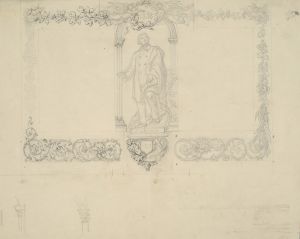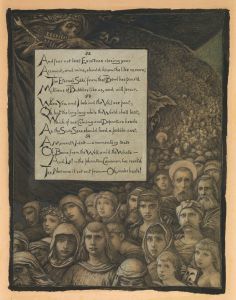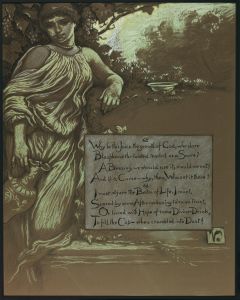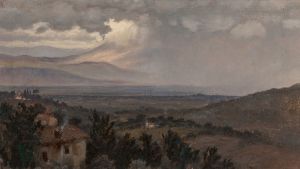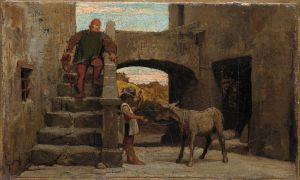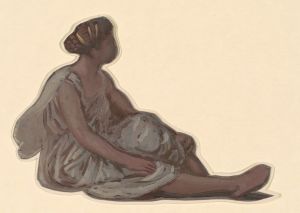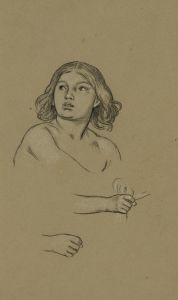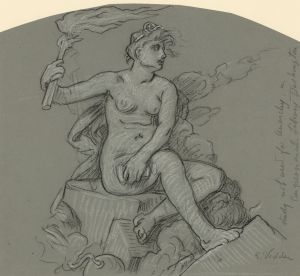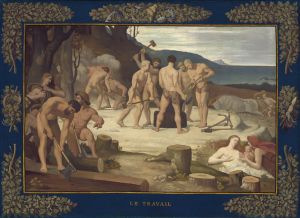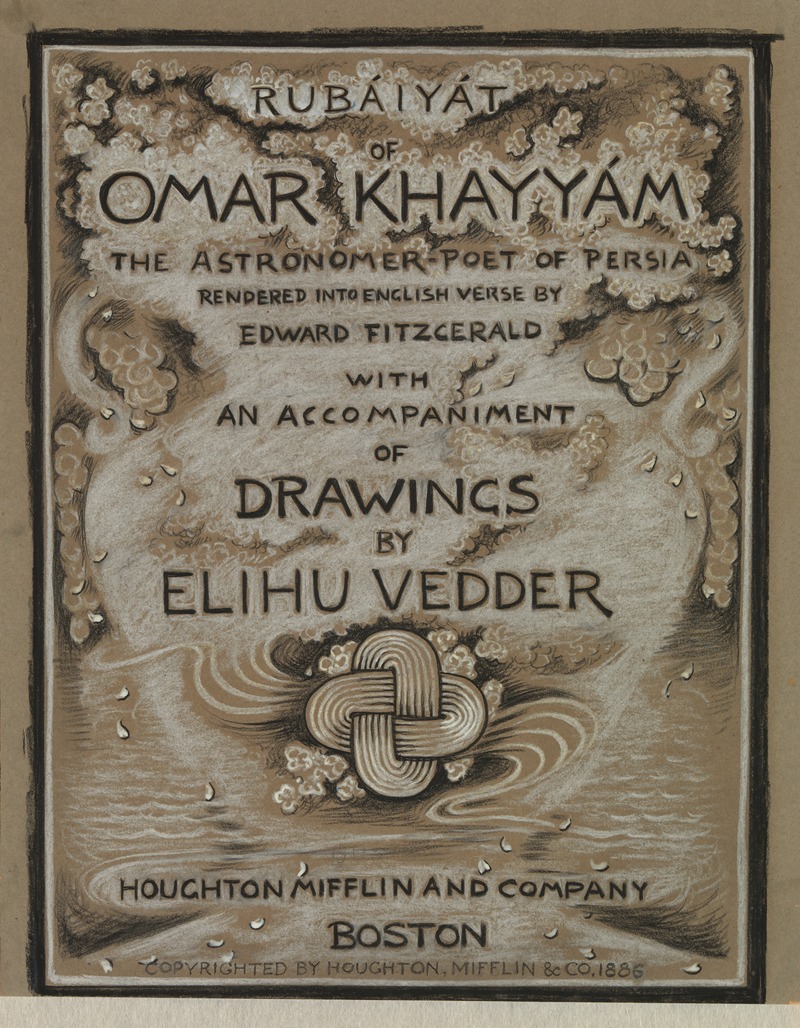
Title Page
A hand-painted replica of Elihu Vedder’s masterpiece Title Page, meticulously crafted by professional artists to capture the true essence of the original. Each piece is created with museum-quality canvas and rare mineral pigments, carefully painted by experienced artists with delicate brushstrokes and rich, layered colors to perfectly recreate the texture of the original artwork. Unlike machine-printed reproductions, this hand-painted version brings the painting to life, infused with the artist’s emotions and skill in every stroke. Whether for personal collection or home decoration, it instantly elevates the artistic atmosphere of any space.
Elihu Vedder's Title Page is a notable artwork created as part of his illustrations for the 1884 edition of Edward FitzGerald's translation of The Rubaiyat of Omar Khayyam. Vedder, an American symbolist painter, was commissioned by the publisher Houghton Mifflin to produce a series of illustrations for this popular and influential collection of Persian quatrains. The Title Page serves as the introductory visual element of the book, setting the tone for the mystical and philosophical themes explored in the text.
The Title Page reflects Vedder's characteristic style, blending symbolism with intricate detail. The composition features a central circular motif, often interpreted as a representation of the cosmos or eternity, surrounded by elaborate decorative elements. The design incorporates classical and mythological influences, which were hallmarks of Vedder's work, as well as motifs inspired by Persian art, aligning with the cultural origins of the text. The use of symmetry and geometric patterns in the Title Page demonstrates Vedder's interest in creating a harmonious and meditative visual experience.
Vedder's illustrations for The Rubaiyat of Omar Khayyam, including the Title Page, were groundbreaking in their integration of fine art with book design. The 1884 edition was published as a deluxe volume, with high-quality printing and binding that showcased Vedder's drawings. The book was well-received and became a significant example of the Aesthetic Movement, which emphasized the importance of beauty and artistic expression in everyday objects.
The Title Page and the accompanying illustrations contributed to the enduring popularity of FitzGerald's translation and helped solidify Vedder's reputation as a leading artist of his time. Today, the original drawings for the project are housed in the collection of the Smithsonian American Art Museum in Washington, D.C., where they are recognized as important works of 19th-century American art.
Elihu Vedder's work on The Rubaiyat of Omar Khayyam remains a celebrated example of the intersection of literature and visual art, with the Title Page serving as a key element in this artistic achievement.





